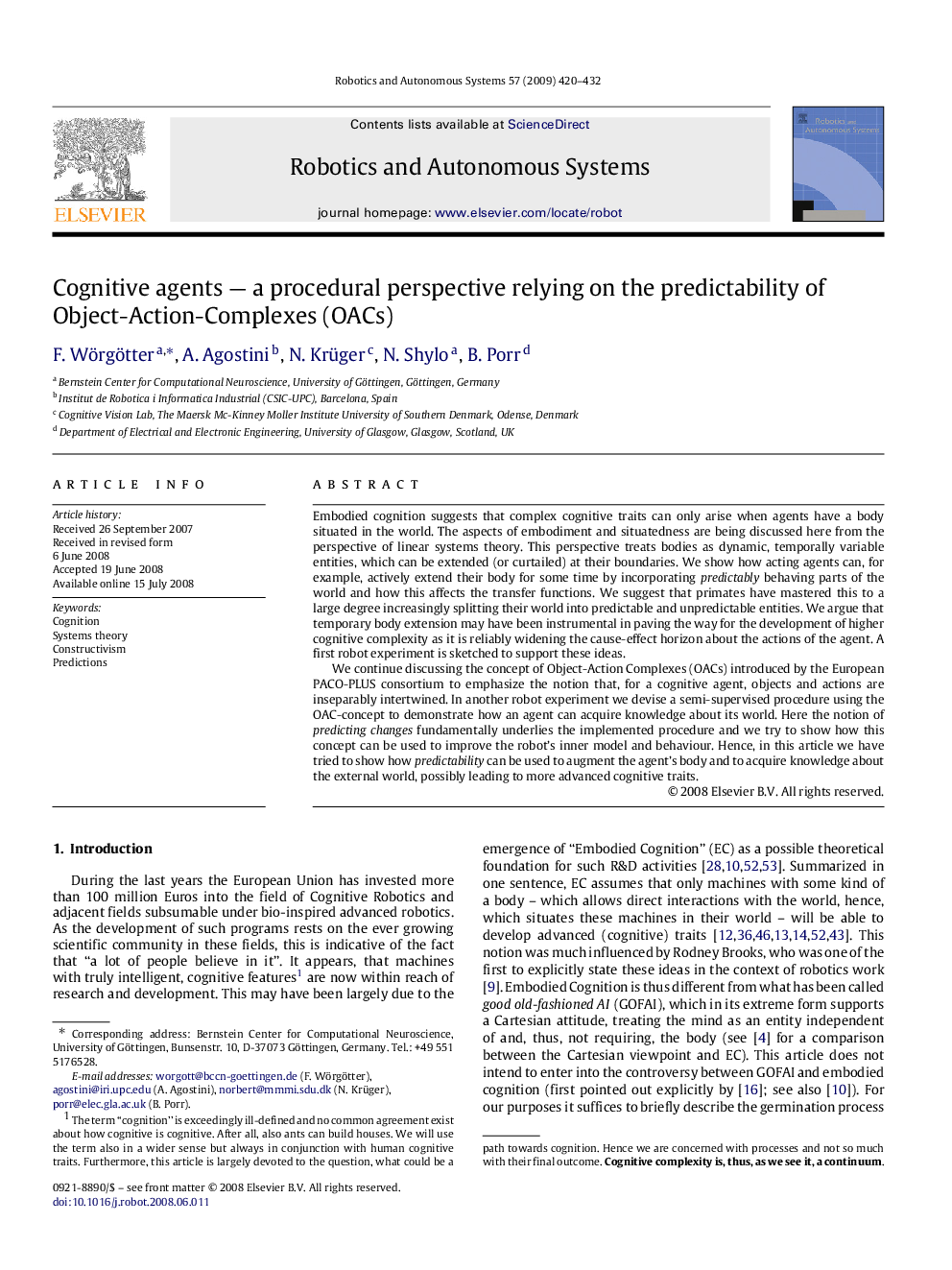| کد مقاله | کد نشریه | سال انتشار | مقاله انگلیسی | نسخه تمام متن |
|---|---|---|---|---|
| 411893 | 679594 | 2009 | 13 صفحه PDF | دانلود رایگان |

Embodied cognition suggests that complex cognitive traits can only arise when agents have a body situated in the world. The aspects of embodiment and situatedness are being discussed here from the perspective of linear systems theory. This perspective treats bodies as dynamic, temporally variable entities, which can be extended (or curtailed) at their boundaries. We show how acting agents can, for example, actively extend their body for some time by incorporating predictably behaving parts of the world and how this affects the transfer functions. We suggest that primates have mastered this to a large degree increasingly splitting their world into predictable and unpredictable entities. We argue that temporary body extension may have been instrumental in paving the way for the development of higher cognitive complexity as it is reliably widening the cause-effect horizon about the actions of the agent. A first robot experiment is sketched to support these ideas.We continue discussing the concept of Object-Action Complexes (OACs) introduced by the European PACO-PLUS consortium to emphasize the notion that, for a cognitive agent, objects and actions are inseparably intertwined. In another robot experiment we devise a semi-supervised procedure using the OAC-concept to demonstrate how an agent can acquire knowledge about its world. Here the notion of predicting changes fundamentally underlies the implemented procedure and we try to show how this concept can be used to improve the robot’s inner model and behaviour. Hence, in this article we have tried to show how predictability can be used to augment the agent’s body and to acquire knowledge about the external world, possibly leading to more advanced cognitive traits.
Journal: Robotics and Autonomous Systems - Volume 57, Issue 4, 30 April 2009, Pages 420–432